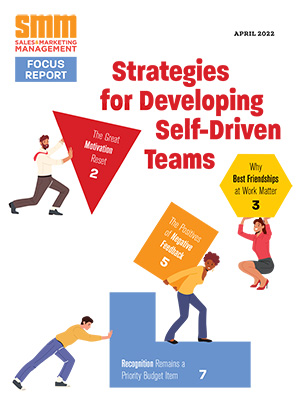B2B decision makers pore over a lot of information, which has made content marketing a key component of companies’ go-to-market strategy. A recent report published by Eccolo Inc., a content marketing creator and consultancy, reveals that when it comes to effectively influencing B2B technology buyers, quality marketing content is more important than quantity, and the format may trump everything else.
In fact, the more content a company produces, the more likely it is to fail. “Marketers have been good at producing large volumes of content, but not quality content and not the right types of content,” the Eccolo report states.
Eccolo found that, on average, nearly half of those surveyed reported consuming between two and five collateral assets before making a decision. One-fourth of respondents reported consuming six to eight “collateral assets,” while 12 percent said they consume nine or more pieces of collateral material.
What type of content propels buying decisions?
When asked what types of content they had consumed in the past six months, respondents listed more than 15 different formats. Product brochures, email and white papers topped the list, while infographics, eBooks and podcasts were consumed the least.
Over half of respondents to the study reported reading an equal amount of emails and white papers. But when it comes to influencing their decision, white papers were the clear winner.
“Before you set your staff to churning out white papers, keep in mind that it’s not that simple — it never is,” comments Sherice Jacob, founder of iElectrify, a provider of Web design and digital media. In reviewing what respondents said were the most influential content marketing assets (see chart), Jacob extracted these nuggets of insight on how to effectively influence the B2B buying process:
Create a true apples-to-apples comparison chart
Having product/data sheets is all well and good, but notice that competitor vendor worksheets are also in the mix. Why run the risk of losing a decision-maker’s efforts when you can create your own comparison chart between your B2B service and those of your competitors? The more you can decrease the odds of them having to go offsite to see how your offer compares to others, the more likely you are to keep them engaged on what you do differently — and better.
Make your product data sheet enticing
A product/data sheet doesn’t have to be some boring overview. Make your best content work for you by bolding key phrases and benefits to stand out. Formulate your headers as questions to create a FAQ-style Q&A. Make liberal use of bullet points to summarize key features, but include a link where more detailed information can be found. If someone read each of your bullet points and nothing else, would they understand the product enough to be able to make a confident buying decision about it?
Look at your product sheet not as data drivel, but as a way to address the B2B buyer’s key pain points. You have to know what they’re going through in order to present a solution that fits their needs. Talk about features, obviously, but don’t forget to include the benefits of those features in a way that makes sense from the buyer’s perspective.
Write white papers that position you as the authority
When was the last time you read a white paper that really stood out to you — like, “These guys know what they’re talking about!” Never, right? First, don’t call it a white paper. It sounds boring and clichéd. Like a giant sales pitch, which is how many white papers are written. Remember, these are people who are actively looking for a solution. So present your paper in such a way as to address all of their concerns in a way that’s easy to read and understand.
You may want to re-brand it as a “special” or “insider” report. Take the time to answer the most common questions and back up your statements with clear, comprehensive proof. This is where the real meat and potatoes of your benefits come in. Lay out precisely how the decision maker, their team, their company and their customers will benefit from your solution.
Think of your white paper not as a sales vehicle, but as a friendly guide — gently moving the decision maker down through each stage of your funnel in a way that doesn’t feel like a pitch, but more of a mutual understanding. You want the reader to come away with a deeper, fulfilled and complete picture of your solution and how it ties in with their existing needs.
Don’t forget your after-the-sale content
Oftentimes, when closing a client, you’ve poured all your efforts into making their decision as easy and hassle-free as possible. Once they’re all set up and acquainted with your solution, don’t let them simply dry up and wither on the customer vine. This is the prime time to follow up with upgrades or details on how they can get the most out of your product or service, as well as how to use it to build their business, retain their customers or experience growth faster or more fluidly than before. Remember that no one wants to feel like they’ve
been duped or made a fool of. And if communication dries up after the sale, that’s precisely how they’ll feel.
“By taking the time to not only write the kind of content that compels them to decide, but walk them through the process and guide them through each step — you’re showing these key decision makers that you’re not ‘all about the sale,’ but rather all about the journey they’re taking to create a better experience for their own customers,” Jacob says. “And that’s the kind of journey you should take — together.”



